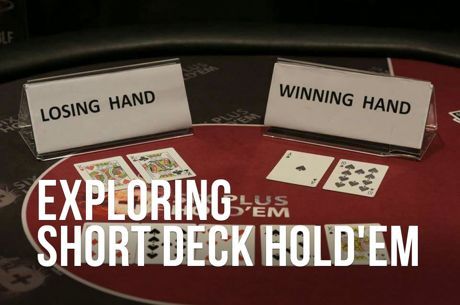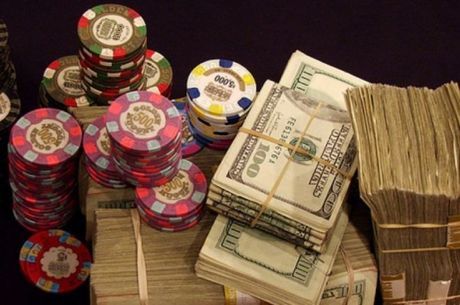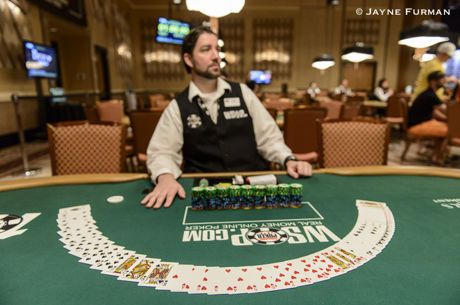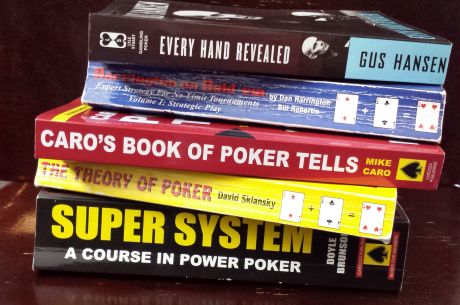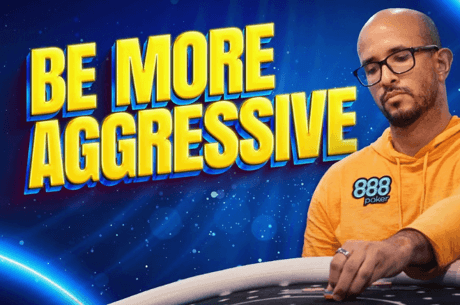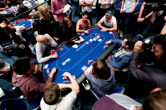Maximizing Expectation When Betting For Value

The most basic question in poker is: "Should I fold, check, call or bet?"
The answer is quite simple: You should always make the highest EV play!
Poker Expected Value (EV) is the average amount of money we expect to win as a result of an action.
We must consider not only the immediate result of our action, but how it cascades during the remainder of the hand.
We can imagine an:
- EVcheck,
- EVfold,
- EVcall,
- EVbet $8
- and so forth.
Our goal is not necessarily to end the hand now, before anything bad can happen. It isn't to minimize risk or to "see where we are."
It isn't to maximize or protect our poker equity.
Our only goal is to maximize the EV of our action.
Suppose we are under the gun and are dealt A?A?.
The expected value of a fold is zero, since we can neither win nor lose any more money once we fold.
Another option is to limp, which would be profitable (+EV) on average. Or we can bet our aces, which should also be profitable.
SEE ALSO: How to Play Pocket Aces in Poker
In a past article titled "A Preflop Question: Is Limping Lame?" I showed that limping is never our highest EV play in an online game, so we can conclude that betting our aces would be our highest online EV play (++EV).
This is also probably true in a Las Vegas small-stakes game.
But there is another factor to consider: how much should we bet?
Suppose we are playing a Vegas $1/$2 game and conclude that EVbet $8 = $4 and EVbet $10 = $3.80.
In that case, we should make the $8 bet since it is more profitable.
Our decision whether to bet, limp or fold should be controlled by how much money we expect to make, on average, by the end of the hand.
This will depend on many factors, some mathematical and some psychological.
SEE ALSO: How to Play Texas Hold'em Poker
The First Fundamental Reason to Bet: For Value
There are only two fundamental reasons to bet:
- We can bet for value
- We can bet as a bluff
The sloppy meme for value betting is that "we must be called by worse," but it isn't nearly that simple.
Let's consider an example.
Suppose we are heads-up on the river and the villain checks into the $200 pot. We have top pair, top kicker with $100 effective stacks.
Can we bet for value?
We can define our Value Bet Ratio as:

When the villain will call mostly with inferior combos, VBR > 1 and our bet will be profitable. This is the origin of the "we must be called by worse" meme.
This catchphrase is sloppy because we should really be thinking "I must be called by a greater number of worse combos than better ones," which is much more awkward to say.
Yet even this statement is not always true.
If we check behind, we will win our share of the $200 pot �� say $180 if we are ahead 90 percent of the time. And EVcheck = $0.
Suppose instead we shove for half-pot ($100); we are essentially offering the villain a side bet.
Suppose he will call with 25 hand combos, 15 inferior ones and 10 superior ones.
Then our VBR = 15/10 = 1.5. So our EVbet = (15/25 x $100) �C (10/25 x $100) = $20.
This is $20 more than a check, which is the value of our side bet.
Notice that only the villain's calling range matters.
We really don't need to know how many combos he has in his current range. We only need to estimate what he will call with.
When we believe our VBR is greater than 1, we have a clear value bet.
It is also important to realize that we are offering the villain 3-to-1 odds on his call.
This can be very enticing to a Vegas small-stakes player, even when he believes that he will lose. This is why thin value bets can be so profitable, since villains will often call down with weaker hands than we expect.
BACK TO BASICS: Poker Hands - What Beats What in Poker
Bet Sizing
Let's extend our previous example by assuming the pot is $100 on the river with $200 remaining effective stacks.
The passive villain checks so we expect he will rarely check-raise bluff on the river. We could check behind with our TPTK and win our fair share of the pot. But a value bet might be more profitable.
Suppose we bet half-pot, as in the previous example.
We would be called by the same 10 superior calling hands. But since the absolute value of the bet is only $50 (instead of $100), the villain might be inclined to call with a somewhat weaker range.
If he now calls with 20 inferior combos, our VBR = 2.0 and our EVHalf-Pot Bet = $33.40. The absolute size of our bet can affect our VBR!
What about shoving for 2x pot?
This bet is much larger, both in relation to the pot and in dollars. Most Vegas small-stakes players will be less inclined to call with their weaker combos, and might even fold a few superior ones.
If our VBR = 1.2 for a shove, then EVshove = (1.2 �C 1.0) / 2.2 x $200 = $18. So a shove would be less profitable than a half-pot bet.
If the villain folds nearly all of his inferior combos, a shove can even be negative EV!
So our value bet task boils down to estimating the optimum bet size, the one that makes the most money.
If we bet too much, our side bet can actually lose money since we might only be called by better. This can be a complex estimate if he will also fold some of his superior combos.
FANCY A QUICK GAME? Free Online Poker Games with Fake Money
Value Betting on Earlier Streets
Another reason the "we must be called by worse" meme is sloppy is that value betting on earlier streets is more complex than simply estimating whether our Value Bet Ratio is greater than 1 or not.
Suppose we raise preflop with A?K? on the button and get called by one villain with a 20 percent Flopzilla calling range.
The flop comes A?10?9?.
A pot-sized continuation bet will probably get calls from an ace (30 combos), strong draws (16 combos), and perhaps some other pairs (7 combos).
We are only behind sets (7 combos) and two-pair hands (10 combos).
Since our VBR = 52/17 = 3.1, our continuation bet is clearly +EV. Checking may also be +EV if it induces the villain to call subsequent bets more loosely than he would otherwise.
Suppose the flop comes A?9?3? instead. A pot-sized bet will get action from the sets (7 combos) and two-pair hands (2 combos), so he has half as many superior combos.
But he also has no draws, 38 aces and 12 other pairs.
Our VBR = 50/9 = 5.6 if the villain will call with all of these combos. But many of the weaker aces might fold to a large pot-sized bet, which would reduce our VBR.
So we might consider betting smaller to entice the weaker hands to call, such as second pair (8 combos) and other weak pairs (36 combos).
Perhaps a half-pot bet gets all of the aces and pairs to call. Our VBR would be higher and our EV might be larger.
NEED HELP? Check Out the Best Poker Training Sites!
Equity-When-Called
When we value bet, we expect to be called mostly by inferior hands. But this is not always necessary.
Consider the A?10?9? flop above. We make a pot-sized bet.
The villain calls and then checks the flop. We believe that he will not call another bet with a weak ace a smaller pair.
He might not call another strong bet with just a draw. So we conclude that our VBR is approximately 1 �� perhaps we don't have a value bet here.
But we haven't considered our equity-when-called. We may have equity against some of his superior calling combos.
Suppose he has 10?9? and the turn brings an ace or a king. A borderline VBR can still produce a +EV result when there are cards yet to come.
WANT MORE? 'Equity' in Poker Is Not Just a State of Mind
The Law of Diminishing VBR
We have TPTK on the flop. We value bet and one villain calls. The turn is a blank, the villain checks again and we consider making another value bet.
If the villain has missed his draw, or has a weak ace or a smaller pair, he may be less likely to call another strong bet. On the other hand, his hand will sometimes improve.
In general, our Value Bet Ratio decreases from one street to the next, making a value bet opportunity less likely.
The conventional thought is "I only have a one-street hand, so I better check here."
If we continue to bet flop, turn and river with a moderate-strength hand, our VBR will continue to decrease until we no longer have a profitable value bet opportunity.
We can sometimes compensate for this "law" by reducing the size or our bet.
We also can check behind, which can have the positive effect of inducing the villain to discount the strength of our hand.
This increases the likelihood that he will call a river bet with a weaker range, thus improving our VBR.
Multiple Villains
Estimating our VBR when we face multiple opponents can be tricky.
We are more likely to be called by multiple inferior villains, improving our profit when we win. But we are also more likely to face a villain with a superior hand. This makes it more difficult to estimate an effective VBR.
Fortunately, we don't really need to know our VBR �� we only need to determine if it is greater than 1.
Suppose in our first example we instead have A?J? on an A?10?9? flop.
Our heads-up VBR is still likely to be greater than 1, since there are many inferior calling combos. But if we are four-handed on an A?9?3? flop, our effective VBR might now be marginal.
We may still have a thin value bet opportunity, but a turn value bet opportunity might not be available. We have a classic one-street hand. We could check behind on a dry flop in order to increase our VBR on the turn.
Steve Selbrede has been playing poker for 20 years and writing about it since 2012. He is the author of five books, The Statistics of Poker, Beat the Donks, Donkey Poker Volume 1: Preflop, Donkey Poker Volume 2: Postflop, and Donkey Poker Volume 3: Hand Reading.
In this Series
- 1 Donkey Poker: Low-Stakes Live Games Differ from Online
- 2 Donkey Poker: Do You Play Too Many Hands?
- 3 Donkey Poker: Are You a Position-Dummy?
- 4 Donkey Poker: When Can I Take a Bathroom Break?
- 5 Is Straddling a Good or Bad Play?
- 6 A Preflop Question: Is Limping Lame?
- 7 Maximizing Expectation When Betting For Value
- 8 Maximizing Expectation When Betting as a Bluff
- 9 Five Weak Reasons to Bet (and One Weak Reason Not To)
- 10 Do You Have 'Jack-O-Phobia'? Playing Pocket Jacks in Live NL Hold'em
- 11 Donk Betting in Small-Stakes Live No-Limit Hold'em

